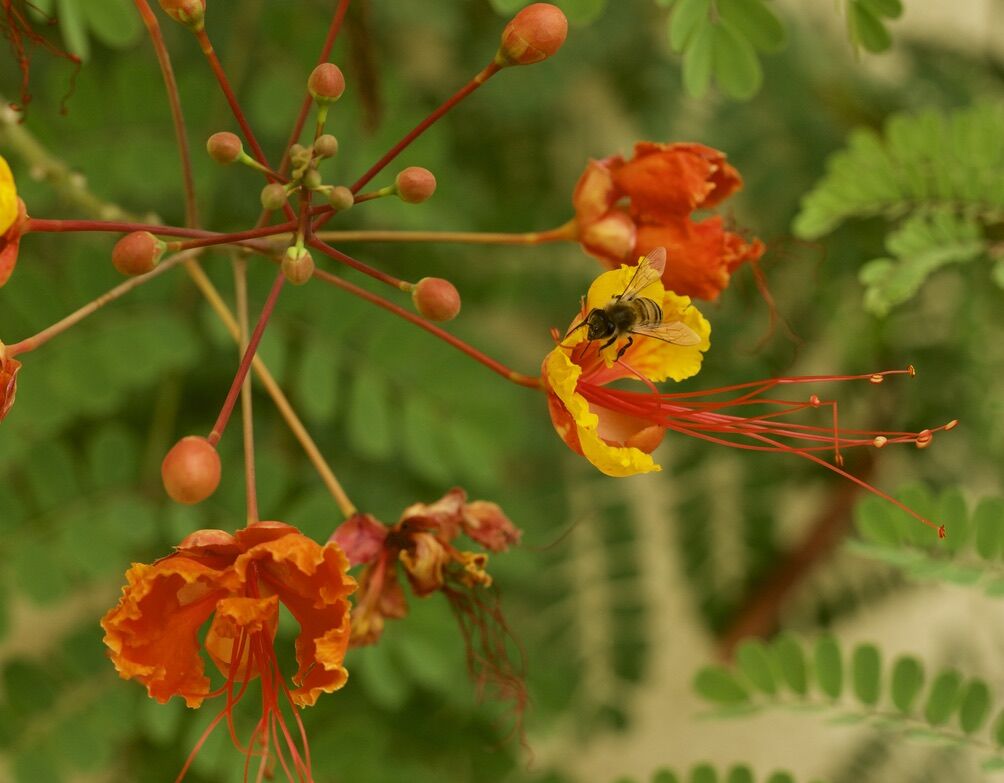If you’d like more wildlife around your garden and want to help secure a future food supply for humans, attracting pollinators to your garden is a great place to start — and even small backyard pollinator gardens can make a big difference.
Unfortunately, many pollinators are in trouble, due chiefly to human-caused problems like loss of habitat and pesticide use. We can help protect them from extinction by providing habitat corridors for their feeding and migration, and by minimizing our pesticide use.
Pollinators provide crucial services for our global ecosystem. Without them, we would lose 75 percent of our flowers and over a third of our food crops. A study by Bayer Crop Science, which manufactures pesticides, estimated that pollinators are worth between $235 to $577 billion to the U.S. economy.
Carianne Campbell, of Strategic Habitat Enhancements, a local restoration and native plant consulting company, says that pollinator gardens are a big help to wildlife. “There's a lot of evidence in the scientific literature and it keeps piling on every year about the value of these small gardens in urban settings.”
Most people think of bees and butterflies when they think of pollinators. However, pollinators in the Sonoran Desert also include moths, beetles, certain species of flies, bats and hummingbirds.
The Tucson Audubon Society also encourages people to have pollinator gardens, even small ones. Their Habitat at Home program, run by Kim Matsushino, helps homeowners design and even plant pollinator-friendly gardens.
Matsushino describes it as “a self-guided step-by-step program that's designed to help homeowners, neighborhoods and HOAs ... to create outdoor spaces that are productive for birds, pollinators and other wildlife."
There are four levels of the program, from a small balcony garden for apartment dwellers to full-size, multi-acre habitats.
“No matter how big or small your plot of land is, you can still provide beneficial habitat,” Matsushino says, and the program encourages people with all levels of experience in gardening.
Campbell says that pollinator plants tend to do very well in pots, another plus for people with small spaces. Hummingbirds are fairly easy to plant for, but gardeners will want to make sure there’s always something blooming, so that a year-round food source is present (more on this in Part 2 of this series, "How to design your Tucson pollinator garden").
Campbell also encourages gardeners to consider the existing food and resources for hummingbirds in their area. “You might want to think about supplementing with a hummingbird feeder that you keep very clean and refill to help get the hummingbirds through the nesting season so that their babies don't die.”
Audubon is focused on helping insects for a number of reasons. “Insects are a huge source of food for birds. So having them still be around is very important to our bird populations,” says Matsushino.
The pollinator crisis also has Audubon’s attention. “We realized that we have to do something for them," Matsushino said. "And creating bird habitat is very similar to creating pollinator habitat. It's just a few extra little components that need to be done in order to suit pollinators.”
Campbell, who has 20 years of experience in habitat restoration, says that pollinator gardens are a great way for people in cities to get “familiar and comfortable with having more insects in their landscapes. ... Insects are critically important. We're talking about conservation of the base of the food chain. So if you care about birds and you care about mammals and you care about everything else then having really diverse and strong populations of insects is really important because they're food for everything else.”
Avoiding pesticides
A critical part of planting for pollinators is to make sure that the seeds and plants you purchase have not been treated with pesticides. You don’t want to attract pollinators to your yard only to poison them. According to Sharon Selvaggio, Pesticide Program Specialist at Xerces Society for Invertebrate Conservation, systemic pesticides can stay in the plant and in the environment for months to years. Neonicotinoid pesticides, in particular, are linked to mass die-offs of bees and kill many other beneficial insects. They have even been shown to have concerning health effects on vertebrate animals such as birds, deer and other animals.
Neonicotinoid pesticides are not the only concern for pollinators. Selvaggio says in response to consumer pressure, some plant growers have reduced their use of neonics, only to increase their use of other systemic pesticides which are just as toxic. “People aren't paying attention to [the new pesticides] because they don't realize it. We call it regrettable substitution.”
The second article in this series provides resources and links to pesticide-free plant growers in the Tucson area. In addition to planting native, pesticide-free plants, do not use any pesticides on your pollinator garden, and avoid them in other parts of your garden as much as possible. For a great resource on how to deal safely with pests in your garden, take a look at this handout on Integrated Pest Management from the University of Arizona’s Extension program.
More resources on pollinators:
- Hummingbirds in Arizona
- Pollinators of the Sonoran Desert: a publication of the Arizona-Sonora Desert museum.
- Research on the effects of neonicotinoid pesticides on insects and various ecosystems.





